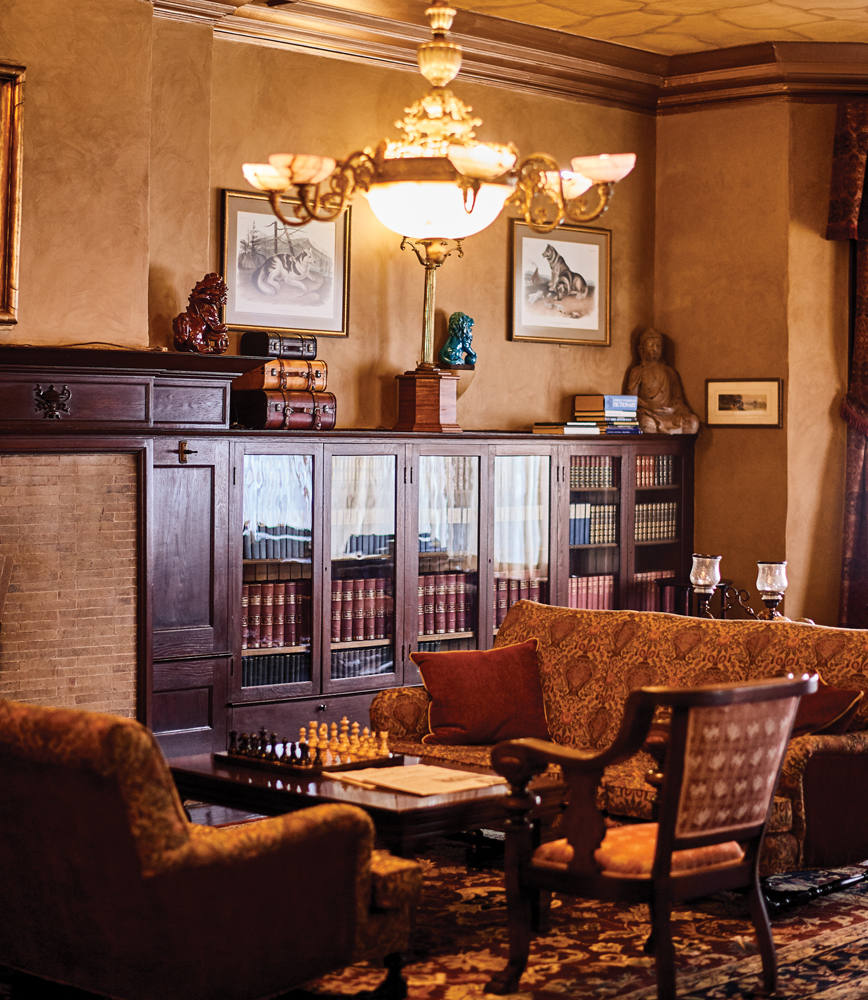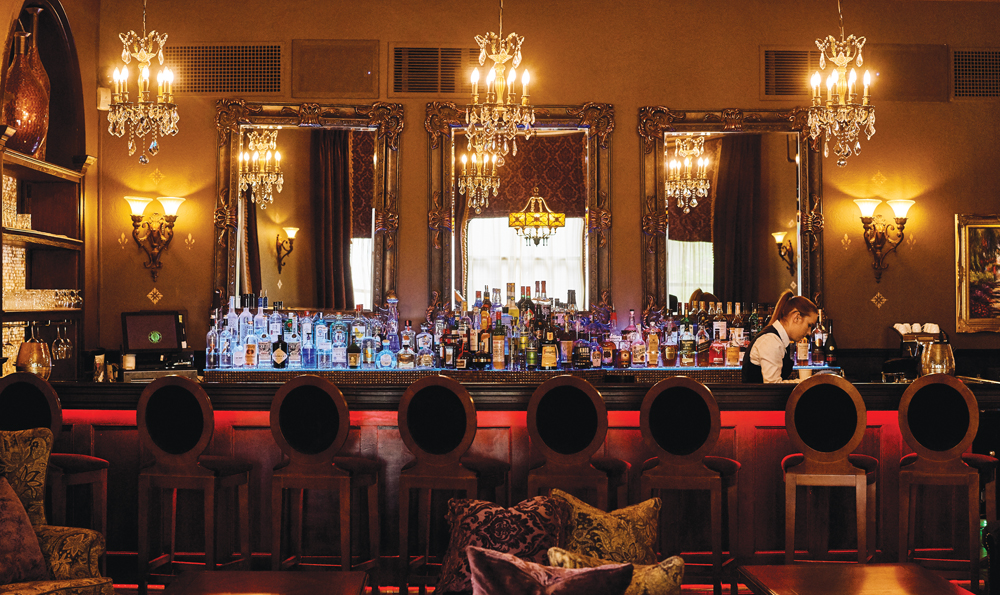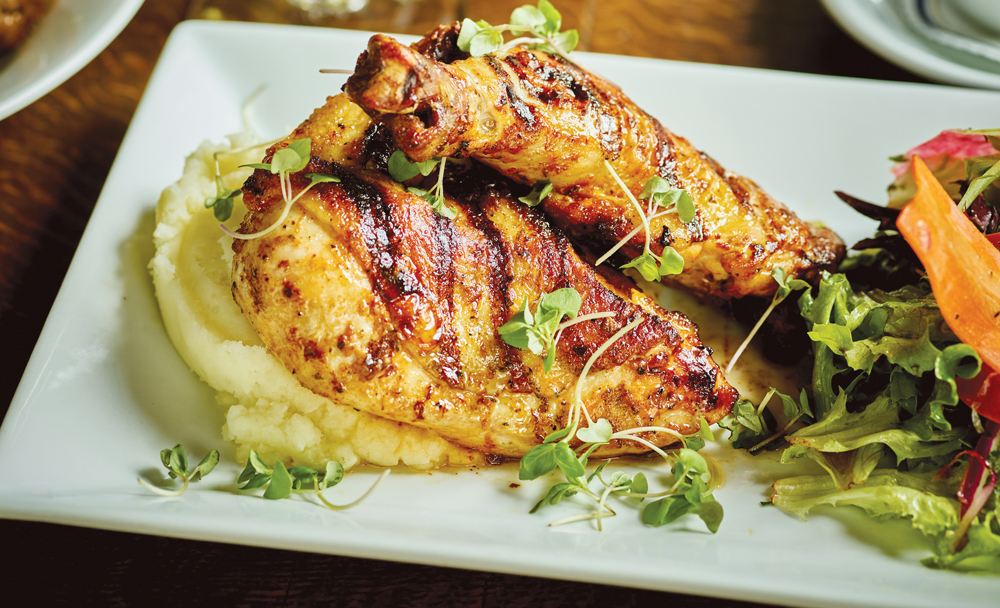
There was a time in Detroit when, during lunch hour, lines of cars double-parked in front of the old Detroit Club. There were two lanes of Caddies, Lincolns, and the occasional Bentley or Rolls, on one side of Cass Avenue filling the roads from Fort Street to Lafayette Boulevard.
Businessmen — it was almost exclusively men at the time — rolled in from across town. They turned their cars over to the club’s parking attendants, and made their way up the stone steps, under an awning, and into the very English comfort of deep couches, plush armchairs, and a roaring fireplace to await their luncheon dates — invariably also men.
Suit coat and tie were a must, and bespoke tailoring always drew closer attention than an off-the-rack Brooks Brothers or other suit.
The food was never great back in the ’80s, to which I can testify, having eaten at the old Detroit Club as a guest on several occasions. My very first meal in Detroit was at the Detroit Club in 1982, during a job interview next door at the Detroit Free Press.

Then-editor Dave Lawrence took me there for lunch through a third-floor walkway that linked the paper’s newsroom to the top floor of the Detroit Club, and then down by elevator to the main dining room. Quite impressive, needless to say.
The food was positively club-dull. But food was hardly the point, since the club’s purpose was primarily about bonding, a little elitism, and getting on a first-name basis with the “right” people.
 Many years ago, a British food writer pondered why club food in London was so wretched, and eventually answered his own question this way: “Because they like it that way!”
Many years ago, a British food writer pondered why club food in London was so wretched, and eventually answered his own question this way: “Because they like it that way!”
The list of members and guests at the Detroit Club, which opened in 1892, includes a number of notables. Entrepreneurs and developers like Edmund A. Brush, who was the original developer of Brush Park, and James B. Book of the Book Cadillac hotel fame; politicians like Christian H. Buhl, an industrialist and former mayor of Detroit, former governor and mayor Hazen S. Pingree, and former Detroit Mayor James J. Couzens; plus, auto industry leaders Edsel B. Ford, Walter P. Chrysler, and James W. Packard.
Despite its rich history and early success, membership fell off over the years. The lines of cars dwindled, and the neckties dropped from the rules as the younger generation are far more casual and tend to take less interest in clubs. In 2013, the Detroit Club closed, leaving just one survivor of its ilk, The Detroit Athletic Club.

Fast forward to 2018. The Detroit Club had been sold, changed hands twice, and has now been magnificently restored and reopened.
This time around, the food is great.
“Officially, we are indeed a club, but open to public for now,” explains General Manager Matthew Peterson. The first three months into the relaunch, the club had grown to about 100 fully “clubbed” new members, and a list of about 500 people interested or wishing to join. Eventually, Peterson says, the facilities will become increasingly for members only, including the dining room. No cut-off point has yet been decided.

In this current temporary and more democratized open-door life, the Detroit Club operates as a boutique hotel, serving a light breakfast and full lunch and dinner, made by a superb chef, Kirk McKinney — a veteran of the long-gone Golden Mushroom and assorted other restaurants and clubs. It has a lovely new bar and well-appointed bedrooms where there were none before.
The club is open to any and all, and is a terrific experience if you want to walk back in time and into that clubby, walled-off old world most of us can’t either afford or even pass muster on the entrance interview. The rooms are comfortable, with brand new beds and furnishings, all very pleasantly done.
We decided to book an overnight stay and a dinner and learned on arrival that we were actually among their very first overnight guests in one of the four just-completed redone rooms. There are now 10 such suites.
The club’s new owners, Emre and Lynn Uralli, deserve many kudos for the painstaking restoration. They have been utterly faithful to the old club, adding a new kitchen, sleeping rooms, and many other improvements. And that old Free Press passageway? It’s now the club’s cigar bar.
 As mentioned, most clubs by definition and tradition don’t offer good food. The new Detroit Club is an exception. The food is excellent, as is the service.
As mentioned, most clubs by definition and tradition don’t offer good food. The new Detroit Club is an exception. The food is excellent, as is the service.
We were seated in the old dining room known as The Grille Room, which looks very much as it did more than three decades ago. McKinney’s crisp food and menu are also very traditional, with the usual listing of appetizers and main courses of chicken, beef, fish, and pork choices.
Our meal began with three shareable appetizers. One of our party chose the truffled consommé. Then came a Mille Feuille of mushroom. The pastry, though very good, was anything but that. It was more like a potpie crust, thick and doughy, while a true Mille Feuille is a lighter, delicate, layered pastry much more suited to the dish. The meaning of the name itself suggests what it is, “a thousand leaves” of pastry.
A second starter that impressed me more was the lobster and crab claw salad; fresh, bright springy claw meat with a creamy light sauce that did not overwhelm the fish, but rather balanced with it.
One of the main dishes, listed as roasted Peruvian chicken, was maximally moist inside, yet had all the marks of clearly coming off a grill, which, in most cases, indicates dry chicken meat. Not here. The Peruvian chicken tastes as if it went through some sort of sous-vide cooking system and then finished on a hot grill.

Someone else ordered the lamb shanks, a deep, dense dish of two small lamb shank bones with steaming sauce and pieces of carrot from the cooking pot — and the meat was near falling off the bones.
We’re pleased that the lights in this elegant, four-story building are on again, its massive windows draped in gentle stately curtains and sheers.
The days of old gents sleeping the afternoon away in deep armchairs are long gone. But for anyone who has been curious about life inside the walls of those old clubs, and how the auto and lumber barons socialized, here’s your chance.
All of it is fascinating. What they left behind is part museum, part history, and today, a building well worth the visit or the stay.
Better yet, well worth the good food.
Welcome back, Detroit Club.
712 Cass Ave., Detroit; 313 338 3222. L&D Daily
|
|
|









